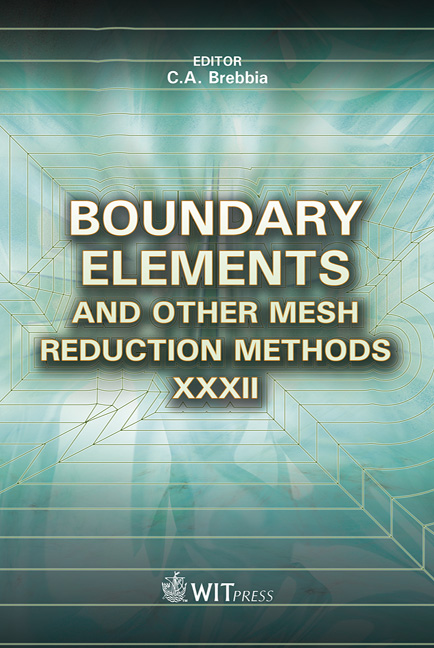BEMs To Evaluate Interface Cracks
Price
Free (open access)
Transaction
Volume
50
Pages
12
Page Range
85 - 96
Published
2010
Size
534 kb
Paper DOI
10.2495/BE100081
Copyright
WIT Press
Author(s)
P. Brož
Abstract
Boundary element approach to the 3D analysis of bimaterial interface cracks is put on. J-integral and stress intensity factors are calculated along the crack face employing the Energy Domain Integral and the M1-integral techniques. The setup numerical means is employed to analyze the problem of a fibre/matrix interface crack subject to lateral loading so as to evaluate the factors of the issues obtained from two-dimensional simulations. The obtained outcomes demonstrate the important role played by the elastic properties of the fibre, the matrix and the laminate in the mixed mode fracture condition. Numerical tests performed indicate that the multi-domain procedure is suitable for bimaterial stress analysis, and as well as competent to yield precise results of the stress intensity factors KI and KII. The multi-domain boundary contour method with possible applications to interface and dissimilar material problems and also a technique tackling with a general type of displacement and traction compatibility conditions are introduced. Keywords: bimaterial plate, debonding, energy domain integral, interface crack, normalized SIF, shared node, virtual crack extension. 1 Introduction Composite materials have highly anisotropic properties, with superb stiffness and strength behaviour in the fibre direction and rather weak properties in the transverse direction. For this reason, laminates are used being made up of several stacked plies with different fibre orientations, causing sufficient stiffness in more than one direction. Nevertheless, mechanical loading of such structure also induces loads in arbitrary directions not the same either with those of the fibre or the applied load. The reason of early failure of the transverse ply is the material heterogeneity. It has been demonstrated that a global strain of 1% already
Keywords
bimaterial plate, debonding, energy domain integral, interface crack, normalized SIF, shared node, virtual crack extension





